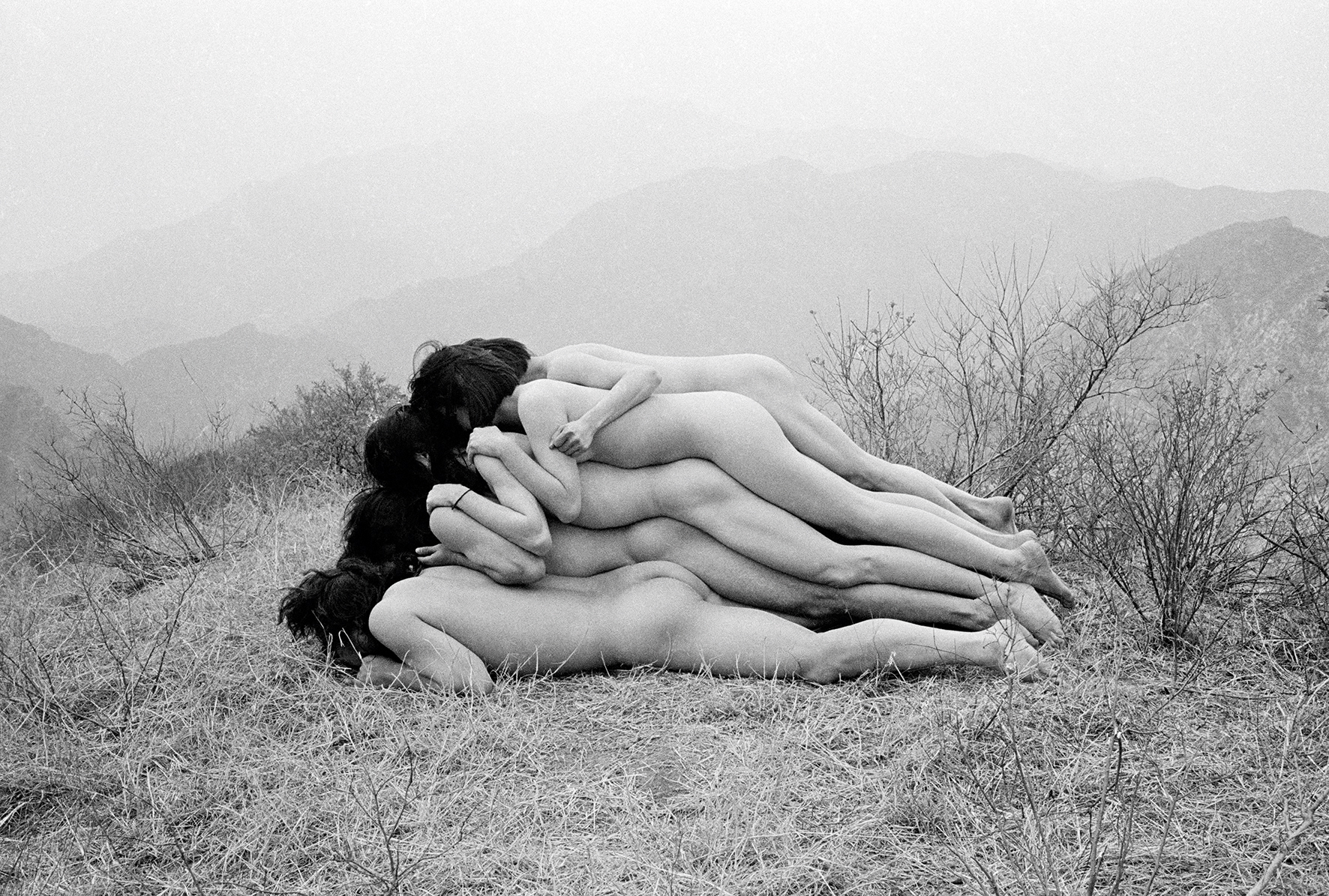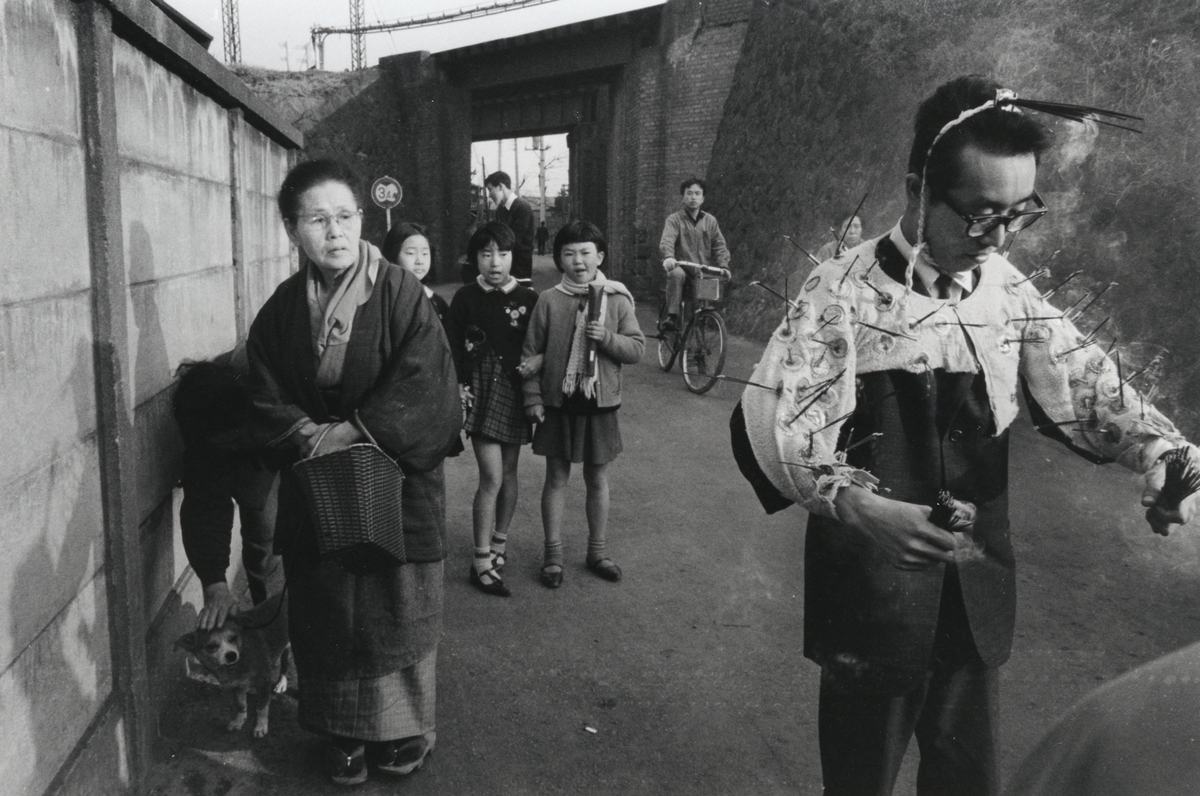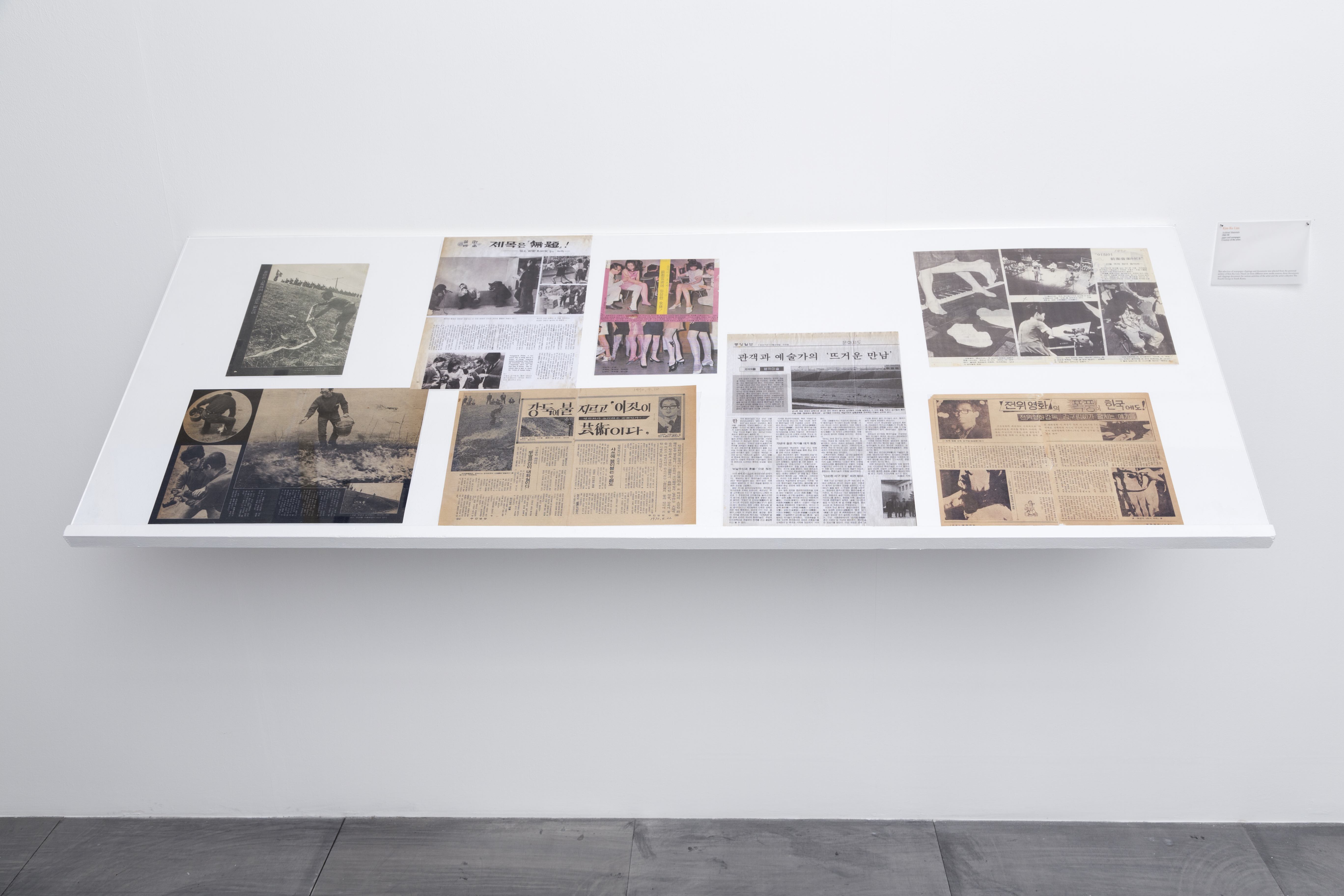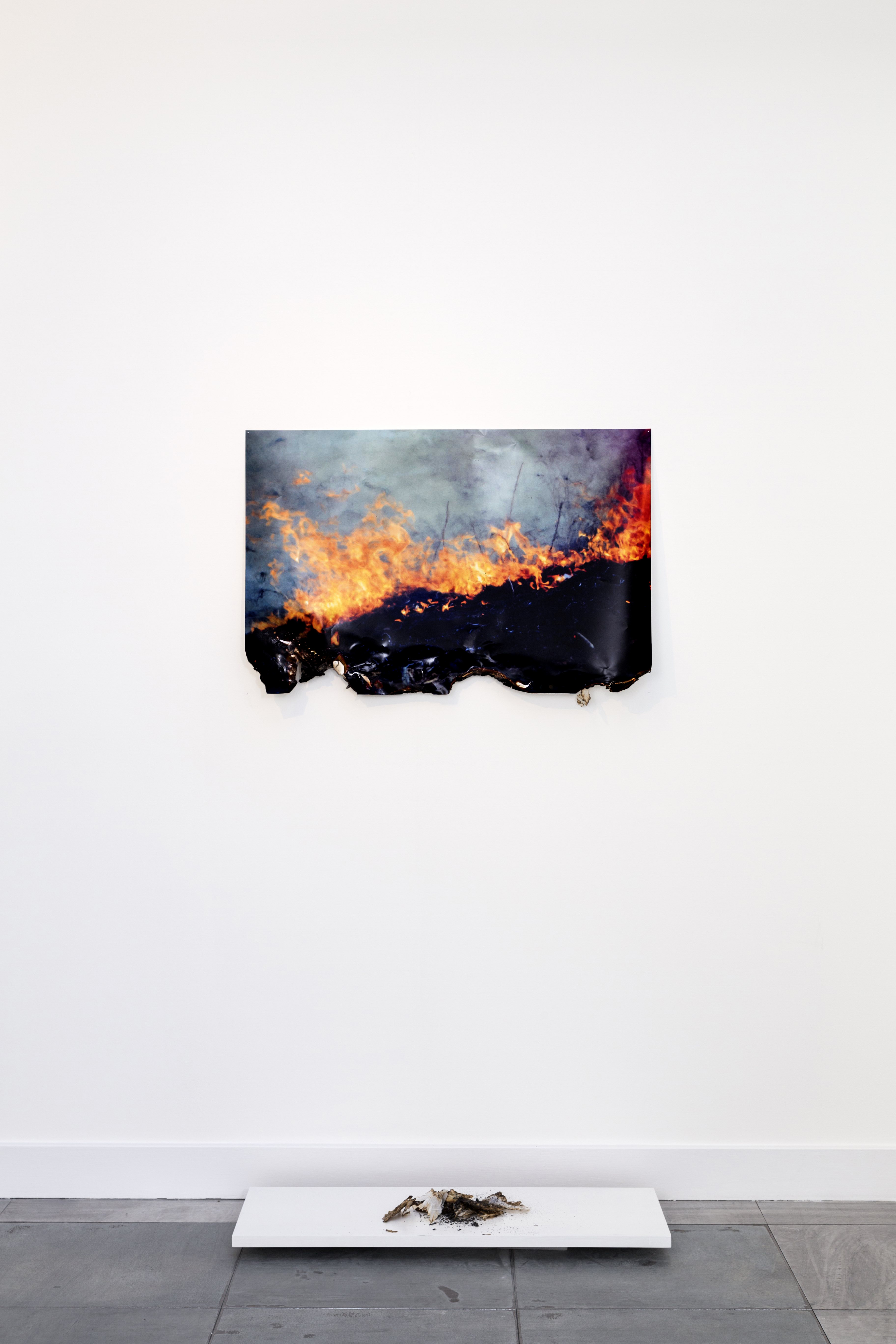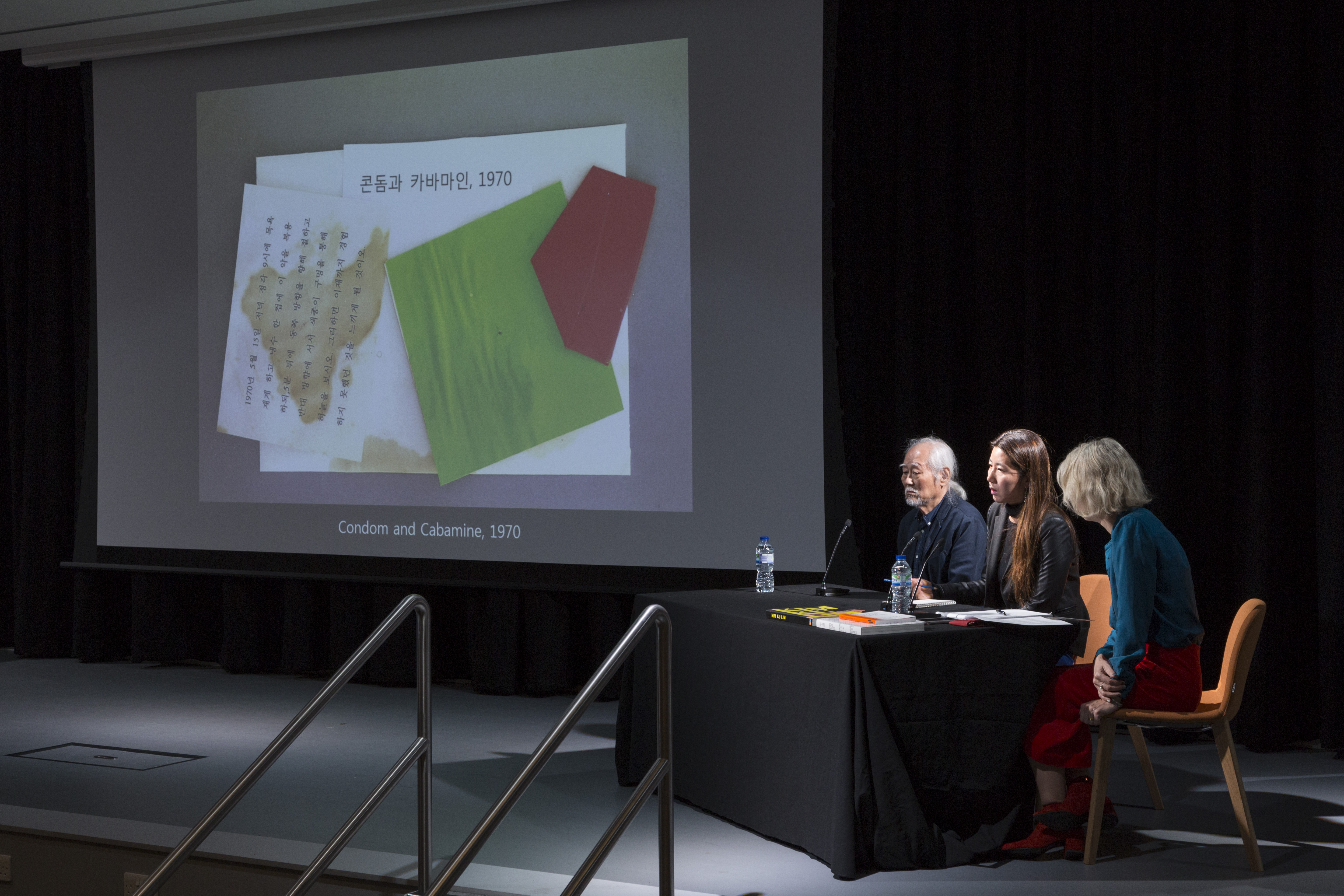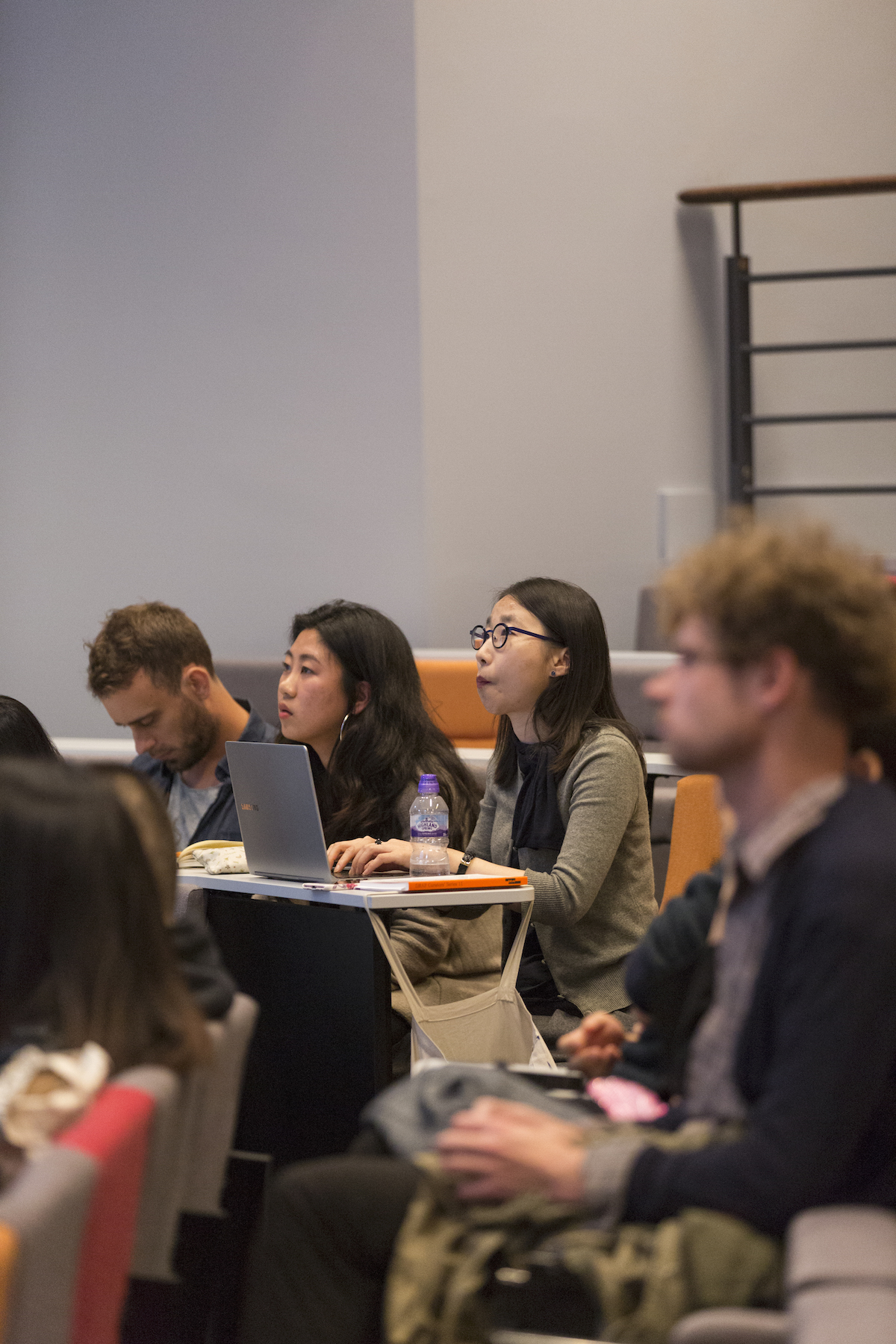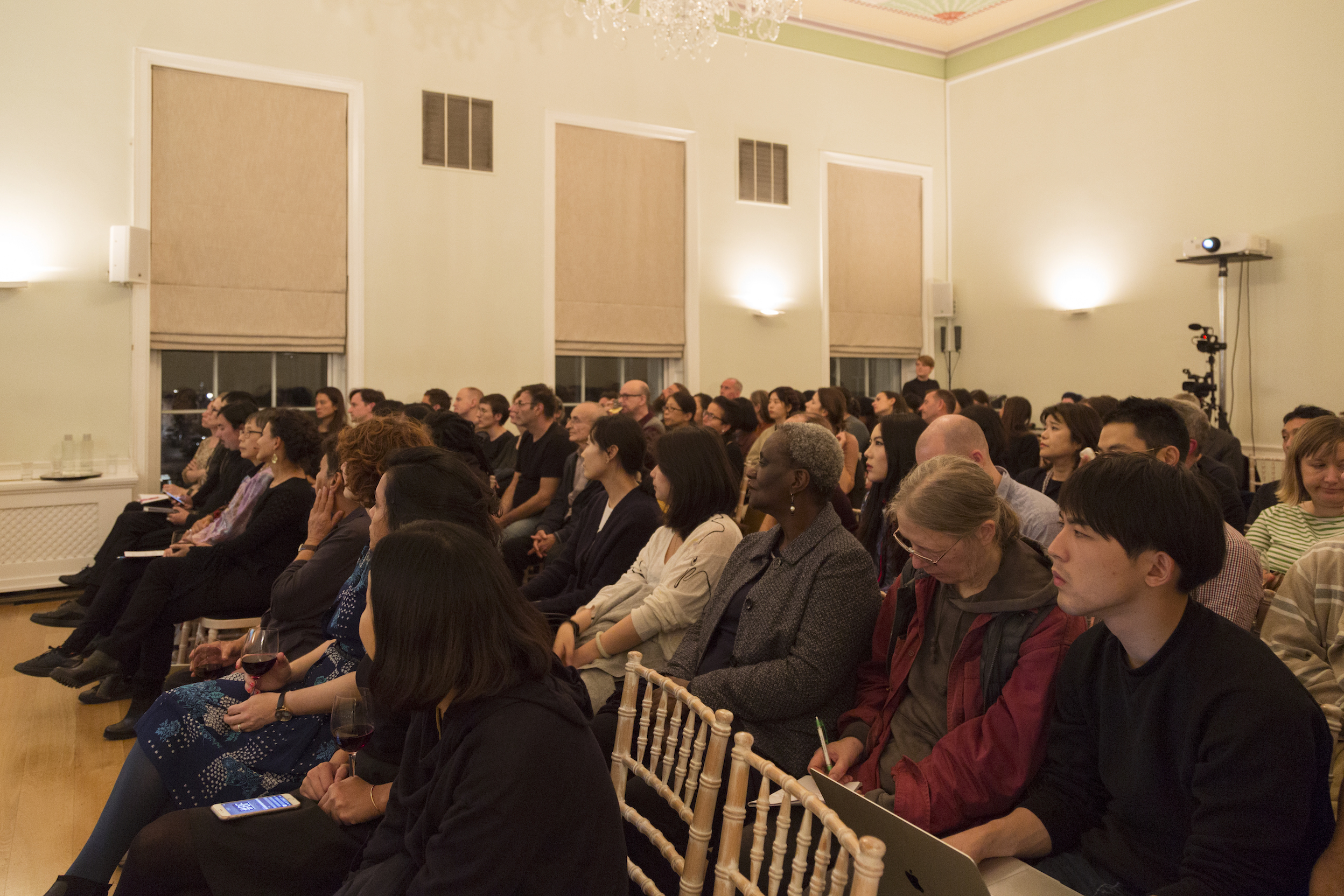![]()
Zhang Huan, To Add One Meter to an Anonymous Mountain, 1995. Performance by Beijing East Village Artists' Collaboration. Courtesy © Zhang Huan Studio, Photo: Lü Nan.
Artists and Contributors: Jiro Takumatsu 高松次郎 | Hi Red Center | Hirata Minoru 平田実 | Kim Ku Lim 김구림 | Tehching Hsieh 謝德慶 | Yingmei Duan 段英梅 | Yumiko Chiba | Reiko Tomii | Yuri Mitsuda | Joan Kee | Yao Jui Chung | KuroDalaiJee | Murai Tokuji | Ma Liuming | Jung Kangja | RongRong
Developed by Victor Wang 王宗孚Part of the David Roberts Art Foundation Curators’ Series 11.
Sept – Oct 2018
For the 11th edition of DRAF Curator's Series, guest curator Victor Wang 王宗孚 launches the Institute of Asian Performance Art (IAPA), an international network and organisation developed to deepen the awareness and understanding of the history of early performance art in Japan, Korea, Mainland China and Taiwan.
The Institute of Asian Performance Art, through the DRAF platform, offers a range of free platforms for engagement with the discipline and study of artistic movements and practices from the region. These platforms include exhibitions, classes, and a Reader, all of which serve to foster a deeper understanding and appreciation of live art from these regions. They address and examine these diverse histories, which are often marginalised in the curriculums of universities and the collections of public institutions, and consider different ways to present and engage with them. The project investigates the trans-national connections and dialogues within the region, mapping the interconnected individuals and collectives that helped establish ‘performance’ in these regions. |
Jiro Takamatsu, Temporary Enclosure of Carioca Building Construction Site, 1971. © Kuramata Design Office / The Estate of Jiro Takamatsu. Courtesy Yumiko Chiba Associates, Tokyo, Fergus McCaffrey, New York and Stephen Friedman Gallery, London. Photo Yasuo Sadayama
| EXHIBITION
Jiro Takumatsu 高松次郎 | Hi Red Center | Hirata Minoru 平田実 | Kim Ku Lim 김구림
28 Sept - 28 Oct 2018, Weds-Sat 12-6pm
Opening Reception & Performance by Kim Ku Lim: Thurs 27 Sept
111 Great Titchfield St, London W1
The Institute of Asian Performance Art is pleased to announce the upcoming exhibition, which will feature a collection of significant pieces from Japan and Korea during the 1960s and 1970s. The exhibition aims to explore the interregional dialogue between performance histories in East Asia during this period. The exhibition comprises sculptures and works on paper by the renowned and highly respected artist Jiro Takamatsu, who passed away. Additionally, it features documentation of performances by the seminal collective Hi Red Center at the 1962 Yamanote Line Festival, one of their inaugural events, captured by photographer Murai Tokuji. The exhibition will feature 24 works by the esteemed photographer, Minoru Hirata. These pieces depict significant performances and events that occurred during the 1960s and 1970s within various public spaces. For his inaugural performance in the United Kingdom, artist Kim Ku Lim will re-stage his seminal work, Wiping Cloth, originally created in 1974. In addition, a selection of archival material and documentation from his early performance works will also be presented.
A crucial aspect of this exhibition is to establish a distinct art historical comprehension and terminology surrounding the evolution of performance art in these regions, as well as how they were recorded and perceived.
|
![]() Installation
image: ‘Institute of Asian Performance Art’, David Roberts Art Foundation, 2018.
Installation
image: ‘Institute of Asian Performance Art’, David Roberts Art Foundation, 2018.
![]() Kim Ku Lim re-stages his 1974 work Wiping Cloth at the opening of ‘Institute of Asian Performance Art’, David Roberts Art Foundation, 2018, the artist’
first UK performance (image by Christa Holka)
Kim Ku Lim re-stages his 1974 work Wiping Cloth at the opening of ‘Institute of Asian Performance Art’, David Roberts Art Foundation, 2018, the artist’
first UK performance (image by Christa Holka)
![]()
Kim Ku Lim re-stages his 1974 work Wiping Cloth at the opening of the exhibition for his first UK performance (image by Christa Holka)
![]() JIRO TAKAMATSU Oneness of Brick, 1971, Installation
image: ‘Institute of Asian Performance Art’, David Roberts Art Foundation, 2018. JIRO TAKAMATSU Oneness of Brick, 1971, Installation
image: ‘Institute of Asian Performance Art’, David Roberts Art Foundation, 2018.
![]()
JIRO TAKAMATSU, No 702. 1976
Installation
image: ‘Institute of Asian Performance Art’, David Roberts Art Foundation, 2018.
![]()
Yamanote Line Festival,
HI-RED CENTER,
Photographs by Tokuji Murai, 1962 . Installation
image: ‘Institute of Asian Performance Art’, David Roberts Art Foundation, 2018.
Yamanote Line Festival,
HI-RED CENTER,
Photographs by Tokuji Murai, 1962 . Installation
image: ‘Institute of Asian Performance Art’, David Roberts Art Foundation, 2018.
![]()
Installation
image: ‘Institute of Asian Performance Art’, David Roberts Art Foundation, 2018.
![]() Minoru Hirata, "Zero Dimension’s ‘Incense Parade,’ with Nagata Tomo", 1965/2014 Minoru Hirata, "Zero Dimension’s ‘Incense Parade,’ with Nagata Tomo", 1965/2014
Minoru Hirata, "Hi Red Center’s ‘Dropping Event,’ at Ikenobō Kaikan", 1964/2014
![]()
Installation
image: ‘Institute of Asian Performance Art’, David Roberts Art Foundation, 2018.
![]()
Installation
image: ‘Institute of Asian Performance Art’, David Roberts Art Foundation, 2018.
![]() Jiro Takamatsu, Shadow No. 1098, 1984
Jiro Takamatsu, Shadow No. 1098, 1984
![]()
Installation
image: ‘Institute of Asian Performance Art’, David Roberts Art Foundation, 2018.
![]()
KIM KU LIM, Archival materials , 1960-90. Installation
image: ‘Institute of Asian Performance Art’, David Roberts Art Foundation, 2018.
![]()
![]() |
Kim Ku Lim,
‘
From Phenomenon to Traces – C’, 1970. Installation
image: ‘Institute of Asian Performance Art’, David Roberts Art Foundation, 2018.
CLASSES
The 'Classes' program comprises a series of lectures, seminars, and performances featuring esteemed international artists, art historians, gallerists, writers, and curators from the Asian region. As education is a fundamental aspect of the Institute of Asian Performance Art, it was deemed essential to extend an invitation to esteemed guests to present, deliberate, and share their experiences and research at various partner venues, educational institutions, and cultural centers throughout the United Kingdom. These educational sessions are made available to the public at no cost.
Sat 29 Sept, 2-4pm
In this seminar, influential artist Tehching Hsieh engages with curator Adrian Heathfield, in which they delve into the intricacies of Hsieh's artistic vision and personal experiences. The discussion centers on Hsieh's concepts of time and performance, with specific emphasis on his renowned durational works, including the seminal One Year Performances and the Thirteen Year Plan (1986-1999). They will also discuss Hsieh's ambitious proposal for a retrospective examination of their career, which is to be evaluated and exhibited in both temporal and spatial dimensions. Yingmei Duan presents a new performative lecture Future Imagination: A solo show by Yingmei Duan in 2021 at Nottingham Contemporary. Specifically designed for the event, the performance represents the latest installment in Duan's series of works in which she assumes the role of a museum guide to present an imagined solo exhibition at the host institution.
![]()
‘Classes’, artist Tehching Hsieh discusses his work with curator Adrian Heathfield at Nottingham Contemporary ,‘Institute of Asian Performance Art’, 2018
![]()
‘Classes’, Yingmei Duan ‘Future Imagination: A solo show by Yingmei Duan in 2021 at Nottingham Contemporary’,‘Institute of Asian Performance Art’, 2018
CLASSES
*CLASS 2: Performance Histories. Kim Ku Lim 김구림Thurs 18 Oct, 7–8.30pmSOAS (School of African and Oriental Studies)
Brunei Gallery Lecture Theatre
In this class, esteemed artist Kim Ku Lim engages in a discourse with art historian and curator Dr. Charlotte Horlyck, who holds the position of Lecturer in the History of Korean Art at the School of Oriental and African Studies. The discourse pertains to Lim's illustrious career spanning over four decades, with a particular emphasis on his seminal role in the evolution of performance art in Korea, through his involvement with the Avant-Garde (A.G.) (established in 1964) and The Fourth Group (established in 1970), as well as his pioneering work in experimental film.
This event is part of the SOAS School of Art Contemporary Arts Research Seminar Series.
![]()
‘Classes’, artist Kim Ku Lim discusses his work with art historian and curator Dr Charlotte Horlyck (image by Christa Holka), SOAS (School of African and Oriental Studies), ‘Institute of Asian Performance Art’, 2018
![]()
Artist Kim Ku Lim discusses his work with art historian and curator Dr Charlotte Horlyck (image by Christa Holka), SOAS (School of African and Oriental Studies), ‘Institute of Asian Performance Art’, 2018
‘Classes’, ‘Institute of Asian Performance Art’, at SOAS (School of African and Oriental Studies), 2018
CLASSES
*CLASS 3: Performance Histories. Japanese Performance Art 1960s–70sYumiko Chiba, Reiko Tomii and Yuri MitsudaWeds 24 Oct, 6.30–9pmAsia House
![]()
‘Classes’, Performance Histories. Japanese Performance Art 1960s–70s, at Asia House (image by Christa Holka),‘Institute of Asian Performance Art’, 2018.
![]()
Curator and art historian Yuri Mitsuda, Japanese Performance Art 1960s–70s, at Asia House,‘Institute of Asian Performance Art’, 2018. (image by Christa Holka)
![]()
Art historian Reiko Tomii,and curator Victor Wang, Japanese Performance Art 1960s–70s, at Asia House,‘Institute of Asian Performance Art’, 2018. (image by Christa Holka)
![]()
Yumiko Chiba presentation at ‘Japanese Performance Art 1960s–70s’, at Asia House,‘Institute of Asian Performance Art’, 2018. (image by Christa Holka)
International art historians Yumiko Chiba, Reiko Tomii and Yuri Mitsuda present a series of talks looking at performance collectives and movements in Japan 1960-70s, an era celebrated for its pioneering early experiments and innovations in body-based and time-based art. Toyko-based Yumiko Chiba discusses her experiences working with the Estate of Jiro Takamatsu (1936-98), a central figure in the development avant-garde movements in post-War Japan. She discusses the significance of Takamatsu's work, his international legacy, and the influence he has had upon the art world in Japan and worldwide.Yuri Mitsuda discusses the influential Hi-Red Center (active 1963-64), founded in Tokyo by the artists Genpei Akasegawa, Natsuyuki Nakanishi and Jiro Takamatsu. Hi-Red Center created happenings and events that were socially reflective, anti-establishment and anti-commercial. The group used the urban environment to create interventions that raised questions about centralised authority and the role of the individual in society. Reiko Tomii discusses 'Publicity as Reward' in 1960s Japan, a particular motivational factor in the context of an isolated location and lack of market for contemporary art. Publicity constituted "reward" in otherwise a "rewardless" (mushō) world of vanguard art. Tomii examines how publicity shaped the performative practices of artist Matsuzawa Yutaka (1922-2006), Kansai-based performance and happenings group The Play and Nigata-based group GUN.
|
![]()
![]() ![]() |
Performance Histories from East Asia 1960s–90s:An IAPA Reader - Book Launch&
Conversation with Tehching Hsieh 謝德慶 Mon 1 Oct, 6.30-8pm 111 Great Titchfield St, London W1
On the occasion of the launch of the Institute of Asian Performance Art: A Reader, a new publication edited by guest curator Victor Wang, Tehching Hsieh engaged in a discussion with Wang regarding his work. The publication, which brings together a variety of essays, photographs, and archival materials, explores the history of early performance art in East Asia. This conversation took place following Hsieh's presentation at Nottingham Contemporary. The publication will include texts by KuroDalaiJee, Reiko Tomii, Joan Kee, Yao Jui Chung and Victor Wang; and images by Hirata Minoru, Jiro Takamatsu, Murai Tokuji, Ma Liuming, Yingmei Duan, Kim Ku Lim, Jung Kangja, RongRong and Tehching Hsieh. A highly valuable new research tool, designed by Liam Johnstone, has been made available to the public. This publication can be obtained at no cost at various events and through online platforms. |
![]() Tehching Hsieh discusses his work with curator Victor Wang at DRAF , ‘Institute of Asian Performance Art’, 2018. (image by Christa Holka) Tehching Hsieh discusses his work with curator Victor Wang at DRAF , ‘Institute of Asian Performance Art’, 2018. (image by Christa Holka)
Tehching Hsieh, One Year Performance 1981, 1982 (Outdoor Piece). © Tehching Hsieh. Courtesy of the artist and Sean Kelly Gallery, New York.
![]()
Tehching Hsieh discusses his work with curator Victor Wang at DRAF , ‘Institute of Asian Performance Art’, 2018. (image by Christa Holka)
--------------------------------
Exhibition Review
+ ArtAsiaPacific Magazine, by CHRISTIE WONG
+ Artforum, China, review of ‘Institute of Asian Performance Art‘ by Ying-Hsuan Tai, Dec 11 2018
Fen-Ma Liuming Walks the Great Wall, Beijing, 1998. Photo: Kristian
|
NOTES TO EDITORS
VICTOR WANG 王宗孚 is an independent curator based in Shanghai and London. Recent exhibitions include Michael Dean: Analogue LOL(2018) at ShanghART Gallery, Shanghai;XUZHEN Supermarket (2007/2017) and the group exhibition Zhongguo 2185 at Sadie Coles HQ, London; Katja Novitskova (2017) at the Cc Foundation & Art Centre, Shanghai; Rehearsals from the Korean Avant-Garde Performance Archive (2017) at the Korean Cultural Centre, London; Jac Leirner: Borders Are Drawn By Hand (2016) at MoCA Pavilion, Shanghai; Neïl Beloufa: Soft(a)ware (2016) at K11 Foundation Shanghai; and Ensemble sin órganos (2016) (with Blanca Victoria López) at the Centro de Arte Contemporáneo Wifredo Lam, Havana.In 2015, Wang was appointed by the K11 Art Foundation as a curator (with Jo-ey Tang) of the travelling exhibition Inside China – L’Intérieur du Géant (Shanghai Station), the first collaborative exhibition between Palais de Tokyo, Paris, and K11 Art Foundation. Wang has curated film programmes, performances, talks and exhibitions at the Institute of Contemporary Arts, London. In 2014 Wang assisted the curatorial team of the Twelfth Havana Biennial (2015), and was Assistant Curator for the Vancouver Pavilion at the 9th Shanghai Biennale (2012). Wang is a contributor to artforum magazine, and has been a guest editor of LEAP magazine. In 2016 he was awarded the AICA Incentive Prize for Young Critics by the International Association of Art Critics (AICA).
JIRO TAKAMATSU 高松次郎 (b. 1936, d. 1998, Tokyo, Japan) was an influential artist, theorist, and teacher in 1960s and 1970s Japan. His work combined subversive and playful aspects of Dada and Surrealism with an idiosyncratic use of Minimalism’s refined visual language. Takamatsu created public interventions, or activities outside the confines of exhibitions. With artists Genpei Akasegawa and Natsuyuki Nakanishi, Takamatsu formed the collective Hi-Red Center (1963–64), which carried out actions in Tokyo to call attention to issues faced in the postwar urban climate. Takamatsu taught at Tama Art University, Tokyo (1968–72). In 1966 the Tokyo Gallery held his first solo exhibition. He represented Japan at the Venice Biennale (1968) and exhibited at the Paris Biennial (1969); São Paulo Biennial (1973); and Documenta, Kassel, West Germany (1977). He was awarded the Grand Prize at the Tokyo Print Biennial (1972). Major retrospectives have occurred at the National Museum of Art, Osaka, Japan (1999); Chiba City Museum of Art, Japan (2000); Fuchu Art Museum, Tokyo (2004); and Kitakyushu Municipal Museum of Art, Japan (2004). His work has been included in group shows at the Guggenheim Museum (1971); Centre Pompidou, Paris (1986); Yokohoma Art Museum, Japan (1994); and the Guggenheim Museum SoHo (1994).
HI RED CENTER (founded 1963, Tokyo, Japan) was a short-lived radical art collective founded by artists Genpei Akasegawa, Natsuyuki Nakanishi and Jiro Takamatsu. Hi-Red Center created happenings and events that were socially reflective, anti-establishment and anti-commercial. Inspired by Japan’s neo-dada movement and Fluxus, the group used the urban environment as their canvas, creating interventions that raised questions about centralised authority and the role of the individual in society. Rather than violence, their direct-actions used humour, parody, and props. One of their most famous performances consisted of an ironic action in which the artists scrubbed the streets of Tokyo during the 1964 Tokyo Olympic Games, in response to the government’s demands that the city should present a clean image to the world. The group disbanded in 1964.
HIRATA MINORU 平田実 (b. 1930, Tokyo, Japan) documented the activities of avant-garde collectives of the 1950s and 60s. Through Ushio Shinohara, one of the founders of the Japanese Neo-Dadaist art movement, he became an intrinsic part of the “Anti-Art” performances. He not only documented performances, but Hirata’s intense involvement gives credence to his defined role in these performances as a ‘[co]-conspirator’. Notable performances in which he collaborated include Hi-Red Center’s Dropping Eventof 1964, Natsuyuki Nakanishi’s Clothespins Assert Churning Actionand Collective Kumo’s protest street performance (which simulated sexual intercourse in a busy intersection). For these striking images of pivotal moments in Japanese art history, Hirata was nominated for a Discovery Award at Arles Photo Festival in 2011.
KIM KU LIM 김구림 (b. 1936, Sangju, South Korea) is a pioneer of performance art and the first artist in Korea to make experimental films such as The Meaning of 1/24 Second(1969). Known as Korea’s first avant-garde artist, he has worked in film, light, performance and land art, often stretching the limits of a given medium. In Korea, he held his first solo exhibition in 1958 at Daegu Information Center, and soon expanded his artistic practice beyond painting. For his artistic “deconstructions” he often used burned plastics, vinyl and metal bits alongside oil paint. He incorporated ready-made objects into his painted canvases, installations and staged performances. Kim played a leading part in several artist collectives (Painting 68, A.G. Group, The Fourth Group). He staged the nation’s first body painting performance and initiated the first Korean mail art Maeseu Midieo ui Yumul[The Relics of Mass Media] (1969).
TEHCHING HSIEH 謝德慶 (b. 1950, Nan-Chou, Taiwan) lives and works in New York. Hsieh entered the United States illegally in 1974, receiving amnesty in 1988. From the late 1970s, Hsieh made five One Year Performancesinside and outside his New York studio, works spanning long durations that make art and life simultaneous. His Thirteen Year Plan(1986–1999), a self-imposed moratorium on exhibiting his work in public in retreat from the art world, set a tone of sustained invisibility. Since the completion of the performance in 1999, Hsieh has exhibited his work internationally including in North and South America, Asia and Europe. Hsieh lives in Brooklyn, New York, and is represented by Sean Kelly Gallery.
ADRIAN HEATHFIELD is a British writer and curator. He has curated a number of performances and durational events across Europe over the last eighteen years, including the Live Culture events at Tate Modern, London (2003). He was curator of Tehching Hsieh: Doing Time, the Taiwan Pavilion at the 57th Venice Biennale (2017), curatorial adviser and attaché for the 20th Biennale of Sydney (2016) and an artistic director with the collective freethought of the 2016 Bergen Assembly, Norway. He has worked with many artists and thinkers on critical and creative collaborations including film dialogues, performance-lectures, writing and workshop projects. He is the author of Out of Now, a 2012 monograph on the artist Tehching Hsieh (MIT Press), editor of Live: Art and Performance (2004, Tate) and co-editor of Perform, Repeat, Record. Live Art in History (2012, Intellect Books). His essays have been translated into ten languages.
YINGMEI DUAN 段英梅 (b. 1969, Daqing, China) is an artist who lives and works in Braunschweig, Germany and Beijing, China. In 1995 she participated in the influential performance To Add One Meter to an Anonymous Mountainalong with Zhang Huan and eight other artists, considered to be an influential moment in Chinese contemporary art. Much of Yingmei’s performance art explores human instincts such as fear and desire, examining society and questioning its conventions and human behaviour. Yingmei Duan has participated in numerous national and international exhibitions, festivals, residencies, lectures and workshops. Her work has been exhibited at the Van Gogh Museum, Netherlands (2005), La Biennale di Venezia, Italy (2007), Haus der Kulturen der Welt, Germany (2009), Guangzhou Live, China (2010), Lilith Performance Studio, Sweden (2011), Hayward Gallery, London, UK (2012), Glynn Vivian Art Gallery, Swansea, Wales (2013), He Xiangning Art Museum, China (2014), the 19th Biennale of Sydney, Australia (2014), Solyanka State Gallery, Moscow, Russia (2015), Wiener Festwoch, Austria (2016) and Capsule Shanghai in China (2017).
CHARLOTTE HORLYCK is an art historian and curator based in London. She received her PhD from SOAS in 2006, and was appointed Lecturer in Korean Art History at SOAS in 2007. Before taking up this position, she curated the Korean collection at the Victoria and Albert Museum in London (1998-2004). She has published widely on Korean material culture, in particular on ceramics and metal wares of the Goryeo kingdom, including their collecting in the early 20thcentury. More recently she has worked on modern and contemporary Korean art and her monograph Korean Art – From the 19th Century to the Present(Reaktion Books) was published in September 2017. Her co-edited volume (with Michael Pettid, SUNY Binghampton) Death, Mourning, and the Afterlife in Korea from Ancient to Contemporary Times(Hawai’i University Press, 2014) was selected for a Republic of Korea Ministry of Education Award (2015).
YUMIKO CHIBA 千葉由美子 lives and works in Tokyo, Japan. She is the founder of Yumiko Chiba (YCA), an artist management office launched in 1998. YCA represents the Estate of many important artists in Japanese contemporary art history including Jiro Takamatsu, Masafumi Maita and Katsuro Yoshida. In 2010, YCA opened a commercial gallery in Shinjuku, Tokyo as “viewing room” and has held a large number of solo shows for both established artists and artists in the young generation. In addition to the above, YCA has planned and organised contemporary art shows at the galleries and museums inside and outside of Japan. YCA also has published many research booklets with critical essays, contributing to interpretations of artists in terms of art history, including the Critical Archive series looking at movements and ideas in pre- to post-war Japan.
YURI MITSUDA 光田ゆり(b. 1962, Nishinomiya, Japan) is an art critic and curator at Kawamura Memorial DIC Museum of Art. She graduated from Kyoto University, Department of Literature. Some of her major books include Words and Things: Jiro Takamatsu and Japanese Art 1961 – 72(Daiwa Press, 2012), From bijutsu hihyo [Art criticism, 1952-1957] and its Era(Fuji Xerox Art Bulletin, 2006), Yasuzo Nojima(AKAAKA, 2009). Mitsuda has organized exhibitions including Talking about Art: The Viewpoint of Yusuke Nakahara(Kawamura Memorial DIC Museum of Art, 2016), For A New World to Come: Experiments in Japanese Photography, 1968-1979(Japan Society, 2015), Hi-Red Center: The Document of “Direct Action(Nagoya City Museum, 2013- 2014), SHINJIRO OKAMOTO THE BIG BOMB at 25:00(The Shoto Museum of Art, 2011), Yasuzo Nojima 1889 – 1964 Works and Archives(The Shoto Museum of Art, 2009), Nakanishi Natsuyuki New Paintings(The Shoto Museum of Art, 2008), Kiyoji Otsuji: Encounter and Collaboration(The Shoto Museum of Art, 2006) and Nakaji Yasui photographer 1903-1942(Kyodo News, 2004).
REIKO TOMII 富井玲子 (b. Osaka, Japan) is an independent art historian and curator based in New York, whose work investigates post-1945 Japanese art in global and local contexts for the narration of a world art history of modernisms. Her early works include her contribution to Global Conceptualism(Queens Museum of Art, 1999), Century City(Tate Modern, 2001), and Art, Anti-Art, Non-Art(Getty Research Institute, 2007). As Co-Founder/Co-Director of PoNJA-GenKon, established in 2003, she has organised several conferences and symposiums in collaboration with Yale University, Getty Research Institute, Guggenheim Museum, and University of Chicago, among others. She is a prolific writer whose latest publication is Radicalism in the Wilderness: International Contemporaneity and 1960s Art in Japan(MIT Press, 2016), which has received the 2017 Robert Motherwell Book Award.
ABOUT
DRAF (David Roberts Art Foundation) is an independent, non-profit organisation for contemporary art. Since it was founded in 2007, DRAF has welcomed over 100,000 visitors to international programmes including exhibitions, commissions, performances and discussions. To date, DRAF has partnered with over 100 museums, institutions, and not for profit organisations and collaborated with over 1,000 artists.In Autumn 2017, DRAF celebrated its 10th anniversary with exciting plans to significantly expand the programme beyond its London base. In 2018, DRAF launched an ambitious UK-wide programme enabled by an endowment of funds raised from the sale of the exhibition space in Camden, and appointed Fatos Ustek as Director & Chief Curator to lead the next phase of the organisation.
DRAF (David Roberts Art Foundation),is a registered charity in England and Wales (No. 1119738). DRAF is proudly supported by the Edinburgh House Estates group of companies.
www.davidrobertsartfoundation.com
CURATORS’ SERIES (2009 – ongoing) supports independent curators by commissioning special research-based exhibitions. The Series presents diverse fields of knowledge, methodologies and practices. Each year, DRAF invites an individual, duo or organisation to curate an original exhibition.Previous guest curators have included Cylena Simonds (UK), Raimundas Malasauskas (Lithuania), Mihnea Mircan (Romania), Mathieu Copeland (UK), Simone Menegoi & Chris Sharp (Italy and US), Pablo Leon de la Barra (Mexico), Vivian Ziherl (Australia) & Natasha Ginwala (India), Christine Eyene (France/Cameroon) , Arcadia Missa (London) and Kunsthalle Lissabon (Portugal).
NOTTINGHAM CONTEMPORARYbrings international art to an iconic building in Nottingham City Centre. Designed by Stirling Prize-winning architects Caruso St John, it is one of the largest and most ambitious contemporary art spaces in the UK. It opened in 2009 with 1.5 million visitors to date.
www.nottinghamcontemporary.org

SOAS (SCHOOL OF ORIENTAL AND ASIAN STUDIES), UNIVERSITY OF LONDON is the only Higher Education institution in Europe specialising in the study of Asia, Africa and the Near and Middle East. Uniquely combining language scholarship, disciplinary expertise and regional focus, it has the largest concentration in Europe of academic staff concerned with Africa, Asia and the Middle East.
www.soas.ac.uk

ASIA HOUSE is the UK's centre of expertise on Asia. Through its Arts and Learning Programme, Asia House’s mission is to inspire and engage diverse audiences by encouraging dialogue aimed at finding common ground amongst different schools of thought on how to look at Asia’s historical and cultural development. This is done through a dynamic series of live events; from panel discussions to music, dance, performance, visual art, film, food, fashion and literature.
www.asiahouse.org

TOKYO ARTS AND SPACE (TOKAS), formerly Tokyo Wondersite, is an art centre dedicated to the generation and promotion of new art and culture. Based in TOKAS Hongo and TOKAS Residency, TOKAS supports and nurtures young talent in all fields as well as takes a role as a hub in a global cultural network of affiliated cultural facilities in Japan and abroad, and at once a platform for both new talents and internationally active artists to exchange and showcase their works.
www.tokyoartsandspace.jp
THANK YOU
DRAF Curators’ Series is supported by Arts Council England.

Institute of Asian Performance Art is supported by Great Britain Sasakawa Foundation and Daiwa Foundation.
 
Thanks to all artists, speakers, writers and participants for their trust and commitment in sharing their work with us.
Thanks also to lenders and artists’ estates for their generous support, including Matt Symonds, Yukiko Ito, Yumiko Chiba Associates / The Estate of Jiro Takumatsu, Tokyo Station Gallery, Taka Ishii Gallery Photography / Film, HM Archive.
Additional thanks to all who have supported with their invaluable resources, time and expertise, including David & Indre Roberts, Jessica Kim, David Hubbard (Stephen Friedman Gallery), Alba Comolo, Carolina Rito and Merce Santos (Nottingham Contemporary), Dr Charles Gore (SOAS School of Art Contemporary Arts Research Seminar Series), Juan de Lara and Pamela Kember-Tong(Asia House), Jason James (Daiwa Foundation), Brendan Giggs (Sasakawa Foundation), Sabine Unaman and Chris Rawcliffe (Arts Council England), Jenny White (British Council) and Mark Waugh (DACS).
Curators’ Series #11. Institute of Asian Performance Art by Victor Wang was developed and produced by DRAF. Project team: Fatoş Üstek, Rachel Cass, Marlies Augustijn; with thanks to former colleagues Vincent Honoré, Sandra Pusterhofer and Eline Verstegen. |
|
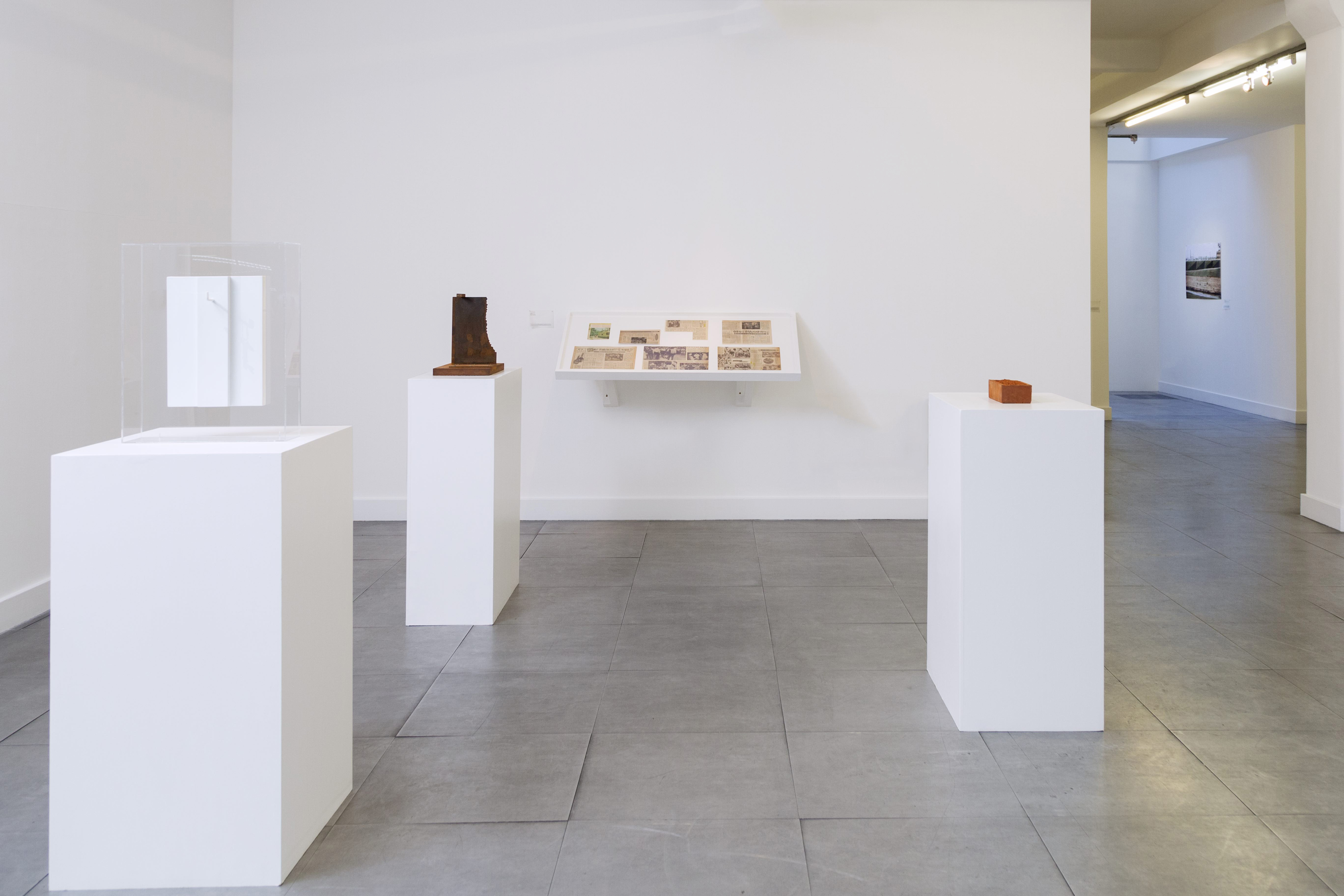 Installation
image: ‘Institute of Asian Performance Art’, David Roberts Art Foundation, 2018.
Installation
image: ‘Institute of Asian Performance Art’, David Roberts Art Foundation, 2018. 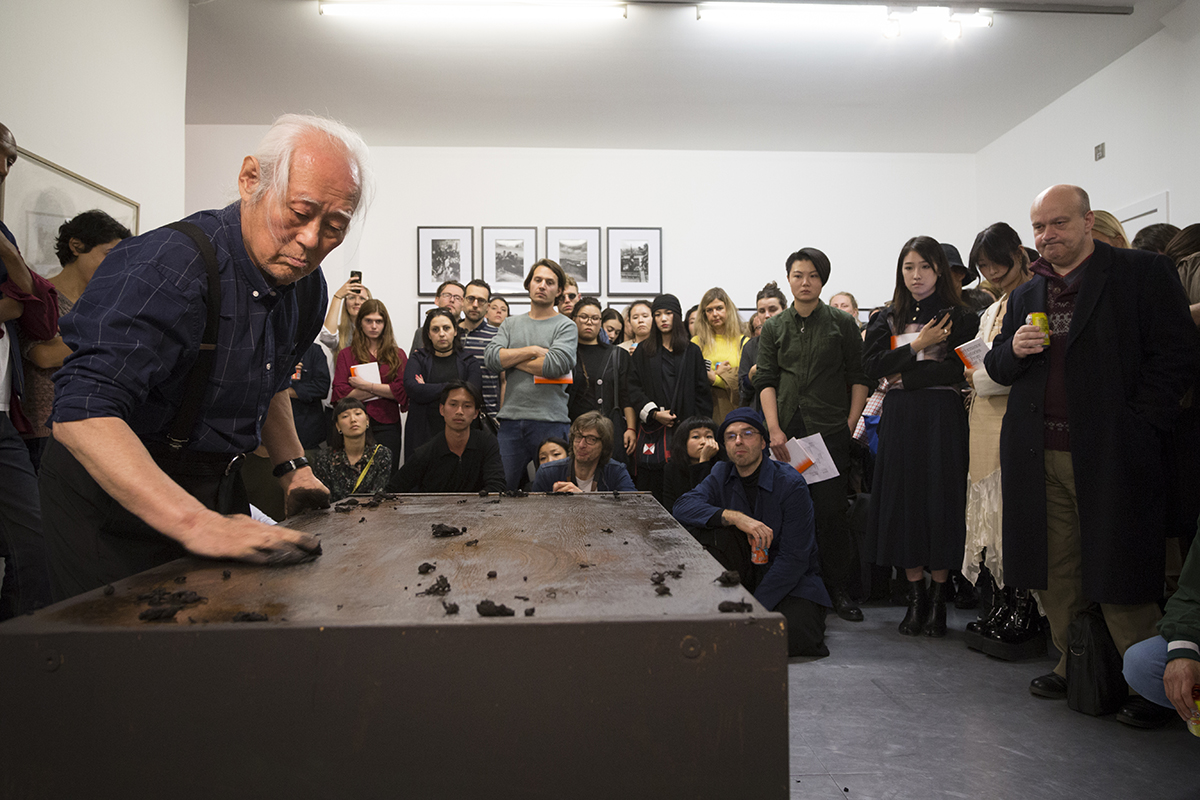 Kim Ku Lim re-stages his 1974 work Wiping Cloth at the opening of ‘Institute of Asian Performance Art’, David Roberts Art Foundation, 2018, the artist’
first UK performance (image by Christa Holka)
Kim Ku Lim re-stages his 1974 work Wiping Cloth at the opening of ‘Institute of Asian Performance Art’, David Roberts Art Foundation, 2018, the artist’
first UK performance (image by Christa Holka)

 JIRO TAKAMATSU Oneness of Brick, 1971, Installation
image: ‘Institute of Asian Performance Art’, David Roberts Art Foundation, 2018.
JIRO TAKAMATSU Oneness of Brick, 1971, Installation
image: ‘Institute of Asian Performance Art’, David Roberts Art Foundation, 2018.
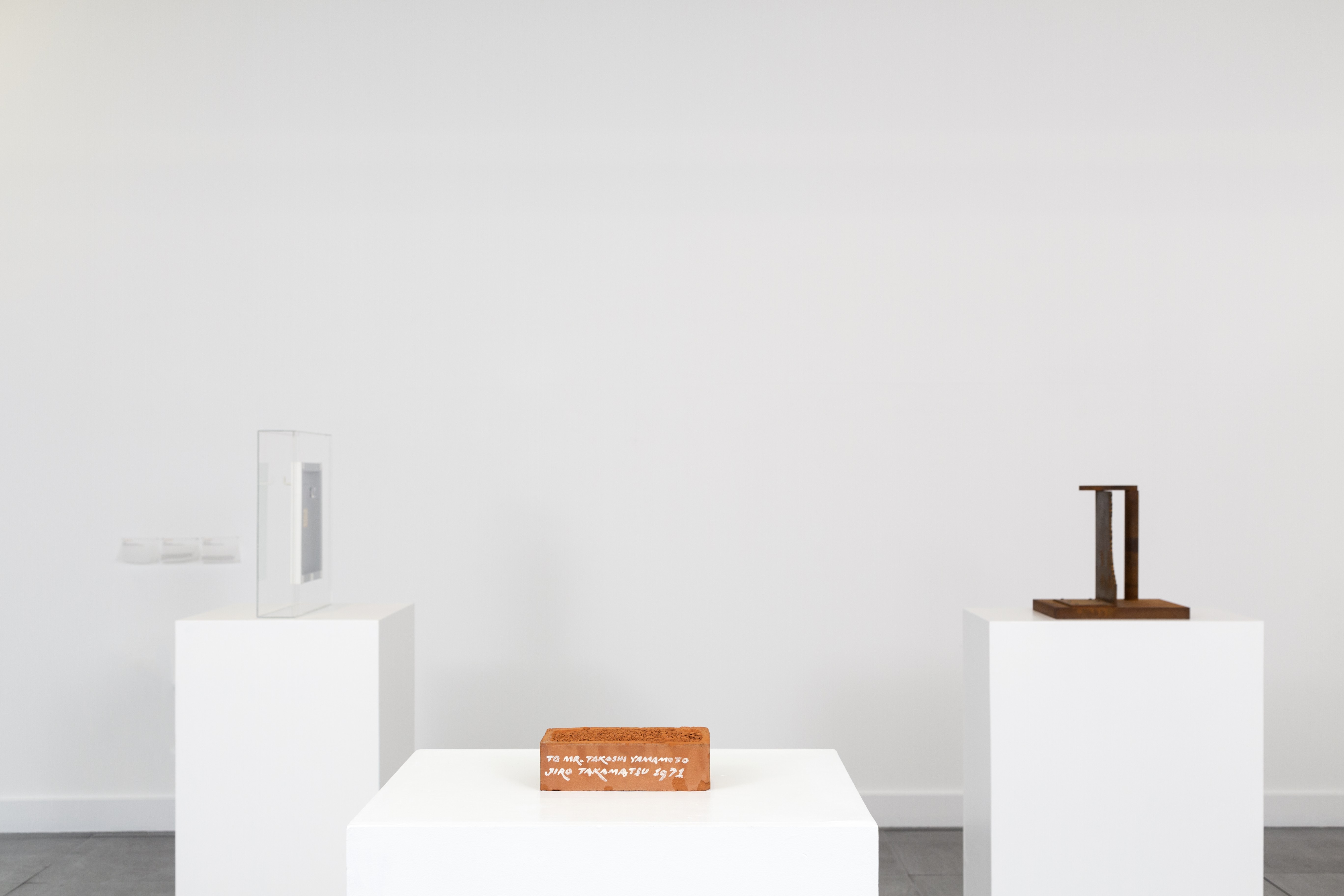
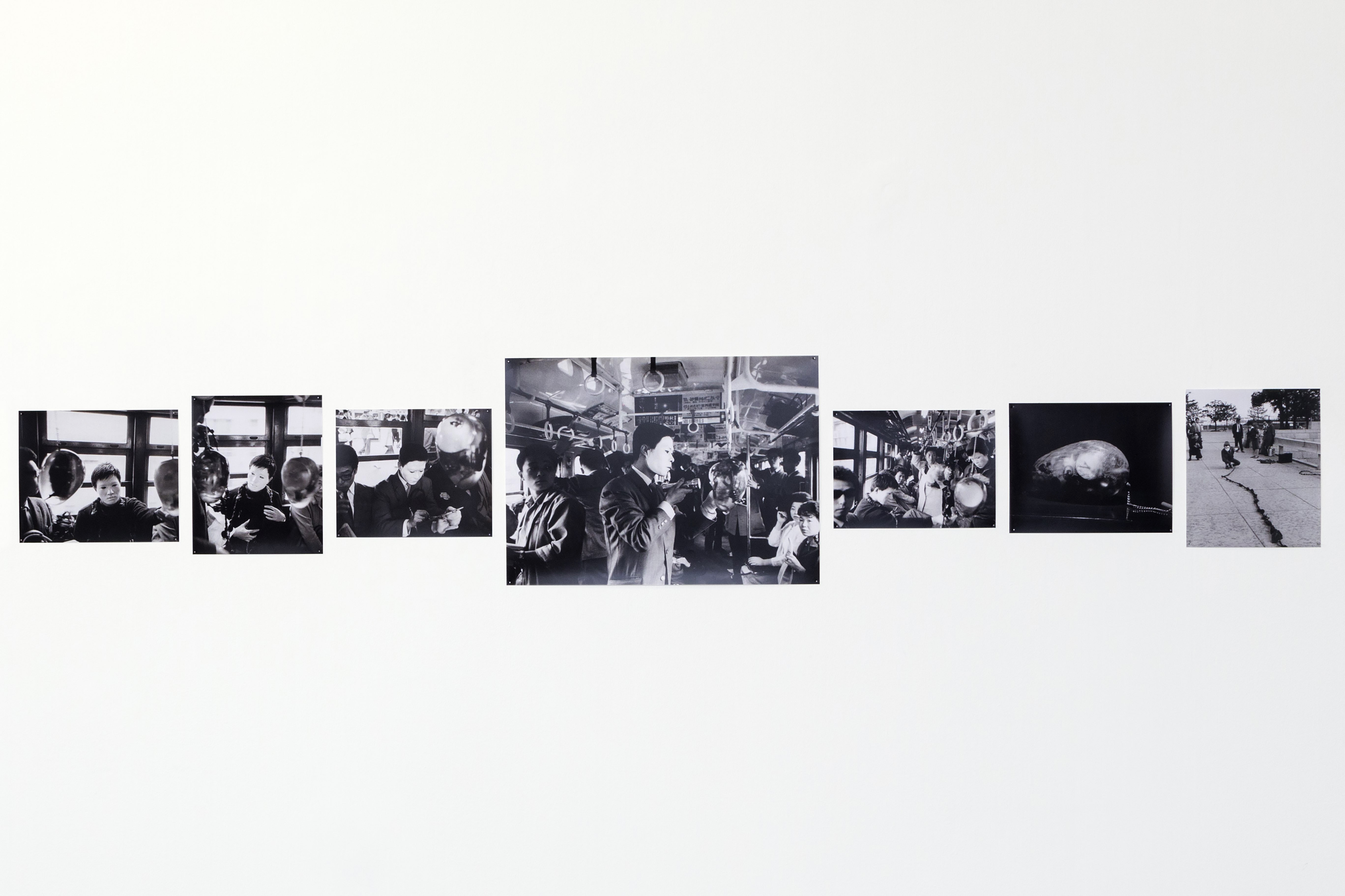
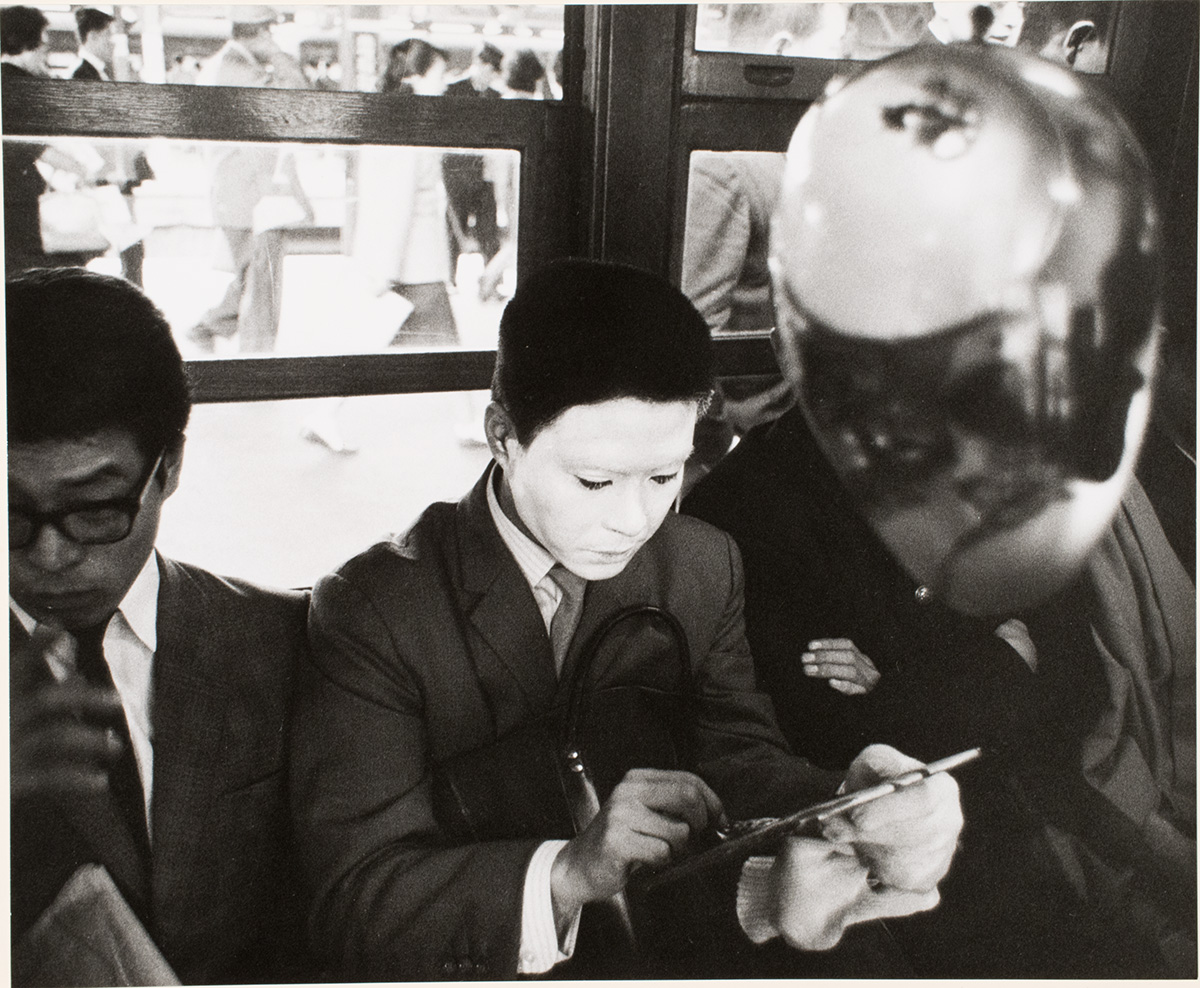
 Tehching Hsieh discusses his work with curator Victor Wang at DRAF , ‘Institute of Asian Performance Art’, 2018. (image by Christa Holka)
Tehching Hsieh discusses his work with curator Victor Wang at DRAF , ‘Institute of Asian Performance Art’, 2018. (image by Christa Holka) 


